
The RS-Computer, expanded as "Running System"-Computer Shoe, is a Puma shoe introduced in 1986 as an early proto-activity tracker by designer Peter Cavanaugh, [1] and re-released as a smartphone-enabled device in 2018. [2]

The RS-Computer, expanded as "Running System"-Computer Shoe, is a Puma shoe introduced in 1986 as an early proto-activity tracker by designer Peter Cavanaugh, [1] and re-released as a smartphone-enabled device in 2018. [2]
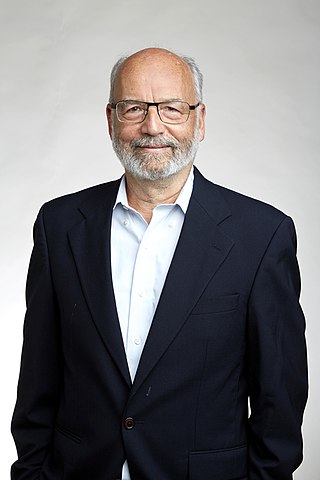
Adi Shamir is an Israeli cryptographer and inventor. He is a co-inventor of the Rivest–Shamir–Adleman (RSA) algorithm, a co-inventor of the Feige–Fiat–Shamir identification scheme, one of the inventors of differential cryptanalysis and has made numerous contributions to the fields of cryptography and computer science.

José Luis Rodríguez González, nicknamed El Puma (Cougar), is a Venezuelan singer and actor who is known for having recorded many international super hits and participated in a handful of telenovelas. He has also served as a coach and mentor on the Peruvian, Argentinian, and Chilean versions of The Voice, as well as a judge on The X Factor Chile.

Adidas AG is a German athletic apparel and footwear corporation headquartered in Herzogenaurach, Bavaria, Germany. It is the largest sportswear manufacturer in Europe, and the second largest in the world, after Nike. It is the holding company for the Adidas Group, which also owns an 8.33% stake of the football club Bayern München, and Runtastic, an Austrian fitness technology company. Adidas's revenue for 2018 was listed at €21.915 billion.

Sneakers (US) or trainers (UK), also known by a wide variety of other names, are shoes primarily designed for sports or other forms of physical exercise but which are also widely used for everyday casual wear.

Club Universidad Nacional, A.C., commonly referred to as UNAM or their nickname Pumas, is a professional football club based in Ciudad Universitaria of Mexico City, Mexico. The club competes in the Liga MX, the top division in the Mexican football league system. Founded in 1954, they play their home games at Estadio Olímpico Universitario.

Horst Dassler was a German businessman. The son of Adolf "Adi" Dassler, founder of Adidas. Horst Dassler founded Arena, a swimwear company, and became chairman of Adidas, and at the time of his death it was the world's largest sporting goods manufacturer with affiliates in 40 nations. Horst himself was known as the father of sports sponsorship as a result of his separate business of managing rights for the world governing bodies of football and the Olympics.
Puma or PUMA may refer to:
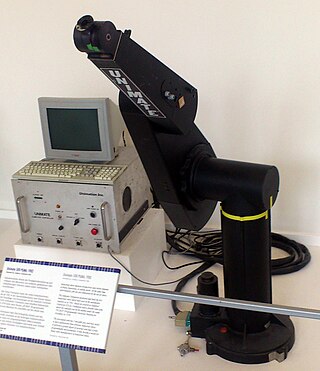
The PUMA is an industrial robotic arm developed by Victor Scheinman at pioneering robot company Unimation. Initially developed by Unimation for General Motors, the PUMA was based on earlier designs Scheinman invented while at Stanford University based on sponsorship and mentoring from robot inventor George Devol.

Puma SE is a German multinational corporation that designs and manufactures athletic and casual footwear, apparel, and accessories, headquartered in Herzogenaurach, Bavaria, Germany. Puma is the third largest sportswear manufacturer in the world. The company was founded in 1948 by Rudolf Dassler (1898–1974). In 1924, Rudolf and his brother Adolf "Adi" Dassler had jointly formed the company Gebrüder Dassler Schuhfabrik. The relationship between the two brothers deteriorated until they agreed to split in 1948, forming two separate entities, Adidas and Puma. Following the split, Rudolf originally registered the newly established company as Ruda, but later changed the name to Puma. Puma's earliest logo consisted of a square and beast jumping through a D, which was registered, along with the company's name, in 1948. Puma's shoe and clothing designs feature the Puma logo and the distinctive "Formstrip" which was introduced in 1958.

The Ford Puma is a small three-door coupé that was produced by Ford Europe from September 1997 to July 2002. The Puma was built exclusively at Ford's Niehl plant in Cologne, Germany. The Ford Puma follows common design cues with other Ford cars at the time, and is in the New Edge family of vehicles.

Football boots, called cleats or soccer shoes in NAmE, are a type of shoe worn when playing association football (soccer). Those designed for grass pitches have studs on the outsole to aid grip. From simple and humble beginnings football boots have come a long way and today find themselves subject to much research, development, sponsorship and marketing at the heart of a multi-national global industry. Modern "boots" are no longer truly boots in that they do not cover the ankle - like most other types of athletic footwear, their basic design and appearance has converged with that of sneakers since the 1960s.
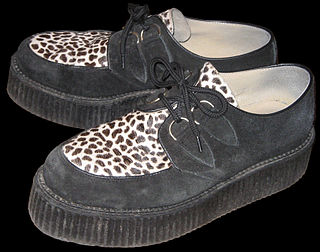
Brothel creepers, sometimes shortened to creepers, are a style of shoe that has thick crepe soles, often in combination with suede uppers. This style of footwear became fashionable in the years following World War II, seeing resurgences of popularity at various times since then.

Adolf "Adi" Dassler was a German cobbler, inventor, member of the Nazi party, and entrepreneur who founded the German sportswear company Adidas. He was also the younger brother of Rudolf Dassler, founder of Puma. Dassler was an innovator in athletic shoe design and one of the early promoters who obtained endorsements from athletes to drive sales of his products. As a result of his concepts, Adi Dassler built the largest manufacturer of sportswear and equipment. At the time of his death, Adidas had 17 factories and annual sales of one billion marks.

Rudolf "Rudi" Dassler was a German cobbler, businessman, member of the Nazi party, and founder of sportswear company Puma.
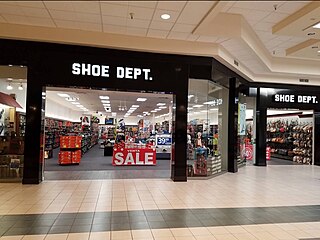
Shoe Show, Inc. is an American footwear retailer based in Concord, North Carolina. It operates shoe stores throughout the United States under the brands Shoe Show, Shoe Dept., Shoe Dept. Encore, Shoebilee!, Burlington Shoes, and Shoe Show Mega.

Muški košarkaški klub Spartak, commonly referred to as MKK Spartak Subotica or Spartak Office Shoes due to sponsorship reasons, is a men's professional basketball club based in Subotica, Serbia. They are currently competing in the top-tier Basketball League of Serbia.
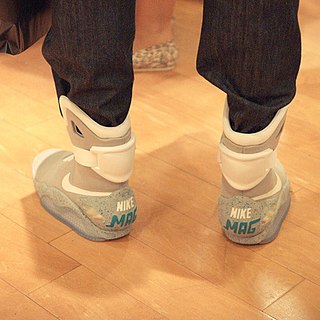
Self-tying shoes are designed to automatically tighten once the user puts them on. Such types of "smart shoes" were initially depicted in the 1989 science fiction film Back to the Future Part II.
Jen Bartel is an American illustrator and comic artist, best known for her work for Marvel Comics and Image Comics. She co-created the comic Blackbird for Image with Sam Humphries. She won an Eisner Award for her work as a cover artist in 2019.
The Dassler Brothers feud was a conflict between two brothers and shoe manufacturers, Adolf ("Adi") and Rudolf ("Rudi") Dassler, in the latter half of the 20th century. Their feud led to the creation of Adidas and Puma, two of the biggest shoe manufacturing companies, and started a long-lasting rivalry between the two companies, reflected in rivalries between football clubs and a culture of animosity between Puma and Adidas employees that divided their home town. The most notable event that fuelled the rivalry was the "Pelé Pact", where both agreed not to sign a deal with Pelé for the 1970 World Cup, feeling that a bidding war for the most famous athlete in the world would become too expensive, only for Puma to break the pact and sign him.

Racing shoes, motorsport shoes or driving shoes are the footwear used for the practice of motorsport or day-to-day driving. They are generally built to provide comfort and precision for operating pedals for an extended period of time, with a narrow, close-fitting construction and thin, flexible soles, as well as to provide protection from fire along with a racing suit, in the context of motorsport. The standards for shoes worn in auto racing, as with other equipment, are regulated by FIA.